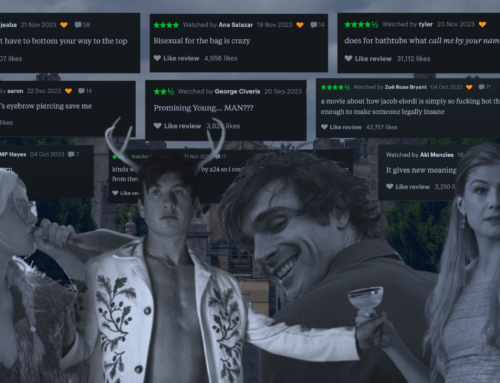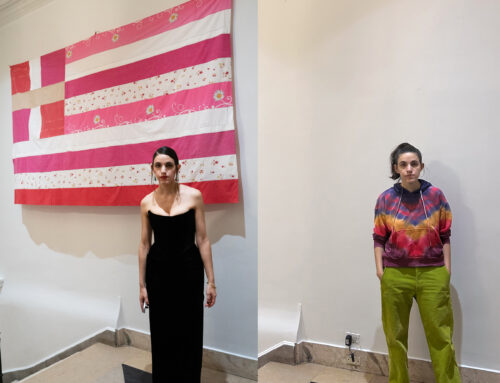I keep trying to get on the Wes Anderson train. The French Dispatch was another missed stop.

Perhaps I lack the sophistication to truly appreciate Wes Anderson; this is definitely something I think about at least once a month. Following my viewing of The French Dispatch, Anderson’s movies became even less regarded from my perspective. Don’t get me wrong, The Royal Tenenbaums and The Grand Budapest Hotel are stellar, but his newest production falls short of these two greats.
After having its release pushed back nearly two years, The French Dispatch seemingly had all the makings of a stellar Anderson film: a renowned if not slightly overwhelming cast, immense hype prefacing its debut, and that quintessential, pastel aesthetic. Despite Anderson declaring his newest film as “a love letter to journalists”, its depiction of the inner workings of a magazine falls short of both parody or tribute.
The French Dispatch features an American magazine staff covering stories in the fictional French town of Ennui. Officially titled “The French Dispatch of the Liberty, Kansas Evening Sun”, editor Arthur Howitzer (Bill Murray) founded the publication as a supplement to his family’s French newspaper. Much of The French Dispatch pays homage to New Yorker articles and staff with Arthur being based on its co-founder, Harold Ross.
The film opens with Arthur’s death, along with a list of demands in his will, most notably including that the magazine be discontinued and all print copies burned. To introduce the city of Ennui, writer Herbsaint Sazerac (Owen Wilson) narrates its highlights while cycling, making up the “Local Color” section, a slice of life story previewing the features. The remainder of the 103-minute movie is divided into an anthology, with reporters from the dispatch investigating stories for their prospective sections, pre-Arthur’s demise.
For “Arts & Artists”, journalist J.K.L. Berenson (Tilda Swinton) reports on a psychotic, incarcerated artist named Moses Rosenthaler (Benicio del Toro). Imprisoned for a double homicide, Moses finds inspiration in prison guard Simone (Léa Seydoux). As J.K.L. presents her journalistic process to an auditorium of students, she accidentally displays a naked picture of herself, in a humorous attempt by Anderson. She also admits she nearly slept with the artist, Moses, when covering her story. Whether a satirical choice by the director or not, his depiction of female characters in The Dispatch is stereotypical and discrediting. The main female characters are unprofessional, mocked for their appearances, and criticized the most. Titled “The Concrete Masterpiece”, this story is wrapped up with an edit from Arthur. For every story, his advice is the same, “just try to make it sound like you wrote it that way on purpose.”
Always a good rule of thumb I suppose.
The next chapter is titled “Revisions to a Manifesto” when “Politics & Poetry” correspondent, Lucinda Krementz (Frances McDormand) reports on a young revolutionary named Zeffirelli (Timotheé Chalamet). While reporting on the protests led by Zeffirelli, Lucinda edits his manifesto, and eventually sleeps with her source. It is while she is in bed with Zeffirelli, typing up her first draft that she brushes off a request from him; “I should maintain journalistic neutrality.” This bit of comedy is undercut by the overall misogyny of the encounter.
In the last feature of the issue, Roebuck Wright (Jeffrey Wright) follows the chef of Ennui’s police commissioner as he ultimately saves the commissioner’s son from a kidnapping scheme. His investigation for “Tastes & Smells” is titled “The Private Dining Room of the Police Commissioner”. It is in this snippet, Saoirse Ronan makes her entrance… as an unnamed showgirl with two lines.
For the final section, “Declines & Deaths”, we return to the headquarters of “The French Dispatch”, a dead Arthur splayed out on his desk, the reporters surrounding him and drafting his obituary. It is here the talent of the cast is truly exhibited. The French Dispatch’s quippy lines are best delivered in a group setting, where the dynamic of its talent is in the same place, within the same story. Unfortunately, this is only seen for approximately five minutes within the entire film, at the beginning and end.
While The French Dispatch didn’t have the whip-smart humor that makes The Royal Tenenbaums and Grand Budapest so spectacular, the film introduces a novel plot structure with its anthology. It is no doubt that Anderson possesses a talent for cinematic storytelling, perhaps he should just stay away from the journalism industry.



